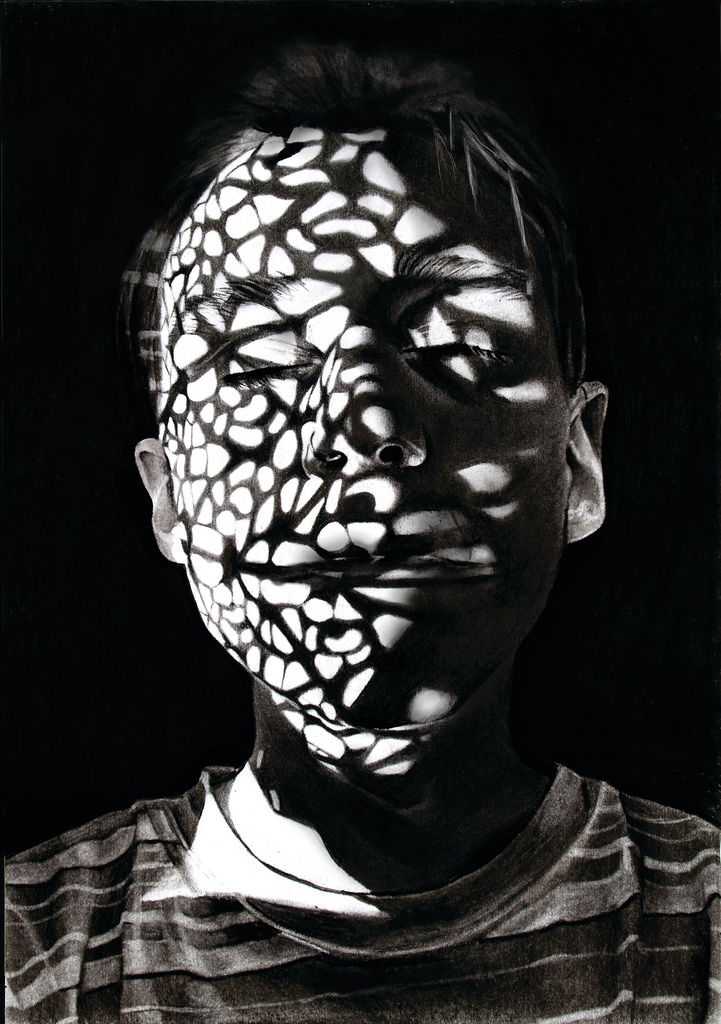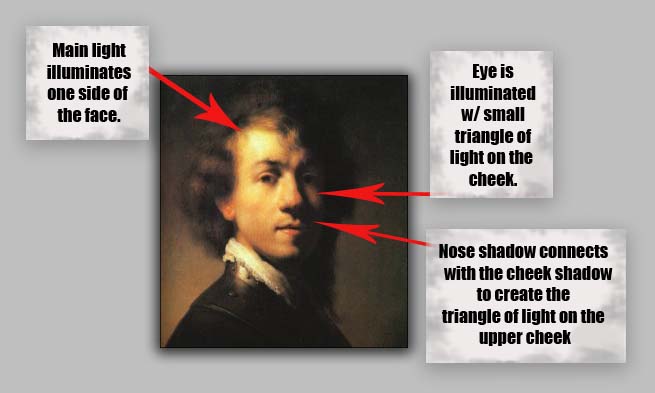Natural Light
Remember >>>Photography is completely dependent on the availability of light.
In most cases we can make use of natural or available / ambient light…but we must be aware different kinds of natural light and learn how to exploit it thoughtfully and creatively…
- intensity of the light
- direction of the light
- temperature of the light
- Using reflectors (silver / gold)

- Using diffusers
- Front / side / back lighting
- High Key / low key lighting
- Shadows / silhouettes


Studio Lighting
Using artificial lighting can offer many creative possibilities…so we will explore
- size and shape of light
- distance from subject to create hard / soft light
- angles and direction…high, low, side lighting
- filtered light
- reflectors and diffusers
- key lighting, fill lighting, back lighting, 3 point lighting
- softboxes, umbrella lights, spot lights and floodlights
- chiarascuro and Rembrandt lighting
- high key and low key lighting techniques
- backdrops and infinity curves
Rembrandt Lighting

k

An example of “bouncing” the flash to soften the effects and create a larger “fill” area…try this wherever there are white walls/ ceilings
Using Flash
Flash units offer a range of possibilities in both low and high lighting scenarios…we will explore
- flash “bouncing”
- fill-in flash
- TTL / speedlight flash
- remote / infra-red flash (studio lighting)
- fast + slow synch flash
- light painting c/w slow shutter speeds

Evidence of Your Learning
During Weeks 8 and 9 we would expect all students to complete 2-3 blog posts (per week) detailing how you are experimenting with various lighting techniques eg CHIARASCURO
Add information / links showing how Chiarascuro has been used since the Renaissance in painting…but also how it used now in photography and film
You must describe and explain your process with each technique…add your images to your blog as you progress, print off your successful images and evaluate your process using technical vocab and analysis skills. Think carefully about the presentation of your ideas and outcomes…compare your work to relevant portrait photographers as you go eg
A Leibovitz, I.Penn, Rankin, R Avedon, Y Karsh, D Bailey, M. Ellen-Mark, M. Testino, S. Mann, D McCullin, S. McCurry, Bill Brandt etc
Expected Final Outcomes
- Responses to Rankin (Destroy and De-Construct) (H/W)
- 1 x Final Portrait using natural light + analysis and evaluation
- 1 x Final Portrait using artificial light + analysis and evaluation
- 1 x Final Portrait using flash + analysis and evaluation
ANSWER THESE QUESTIONS IN YOUR BLOG
- Why do we use studio lighting?
- What is the difference between 1-2-3 point lighting and what does each technique provide / solve
- What is fill lighting?
- What is spill lighting?
- What is butterfly lighting?
- What is loop lighting?
Good Luck!!!…and here is a useful website link for a range of influential portrait photographers to learn from…
http://www.photographydo.com/portrait-photography/50-famous-portrait-photographers-you-need-to-see



